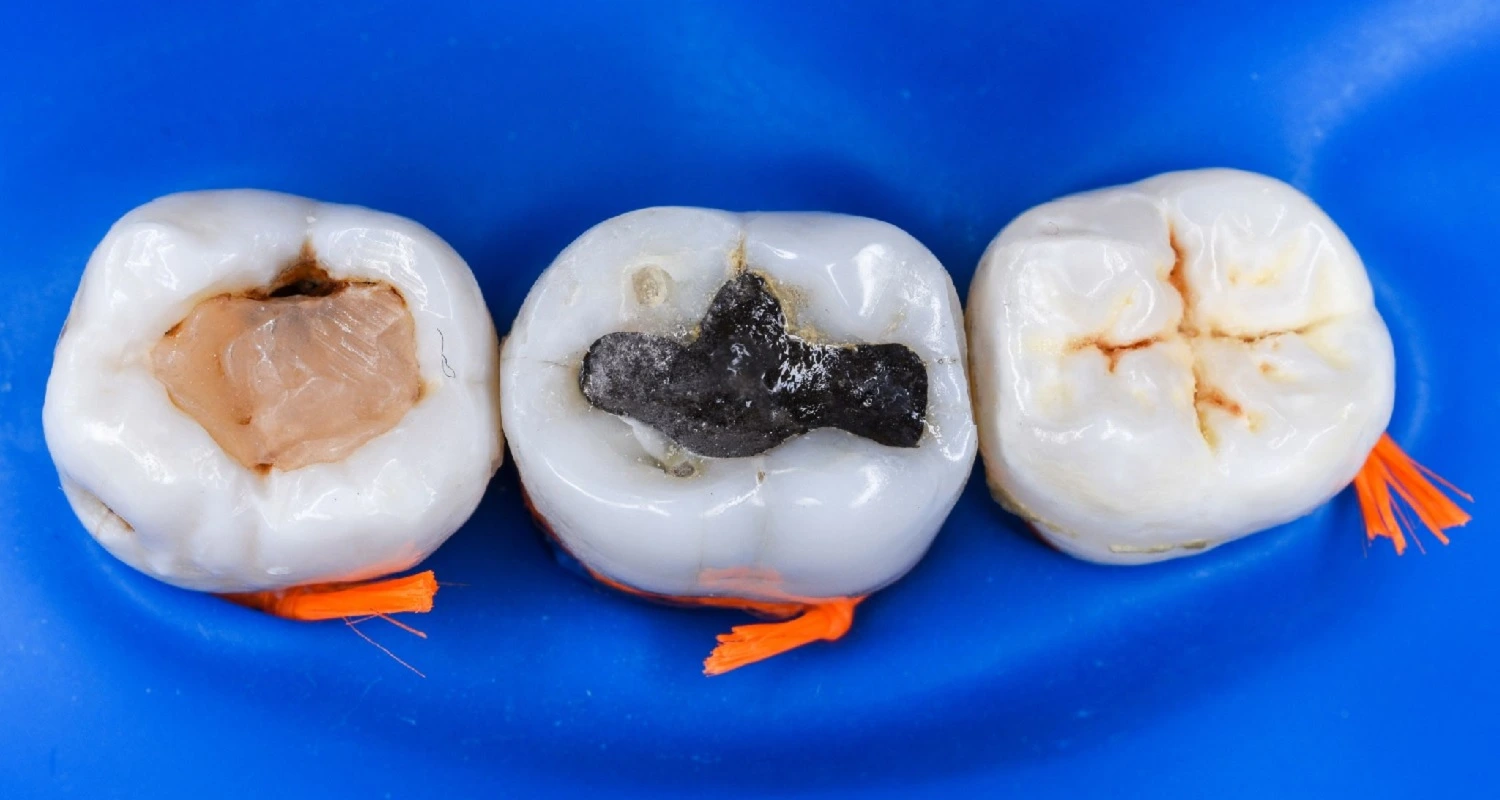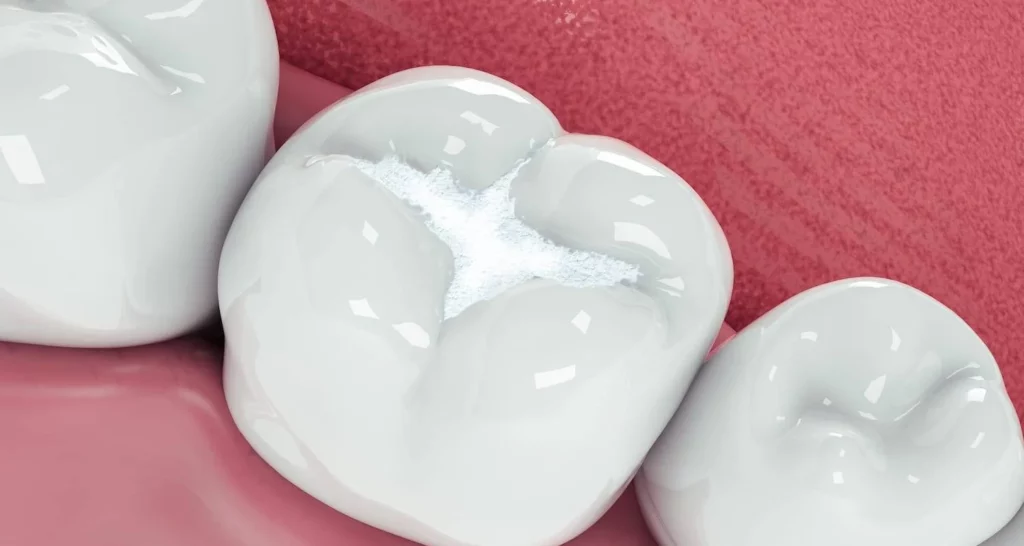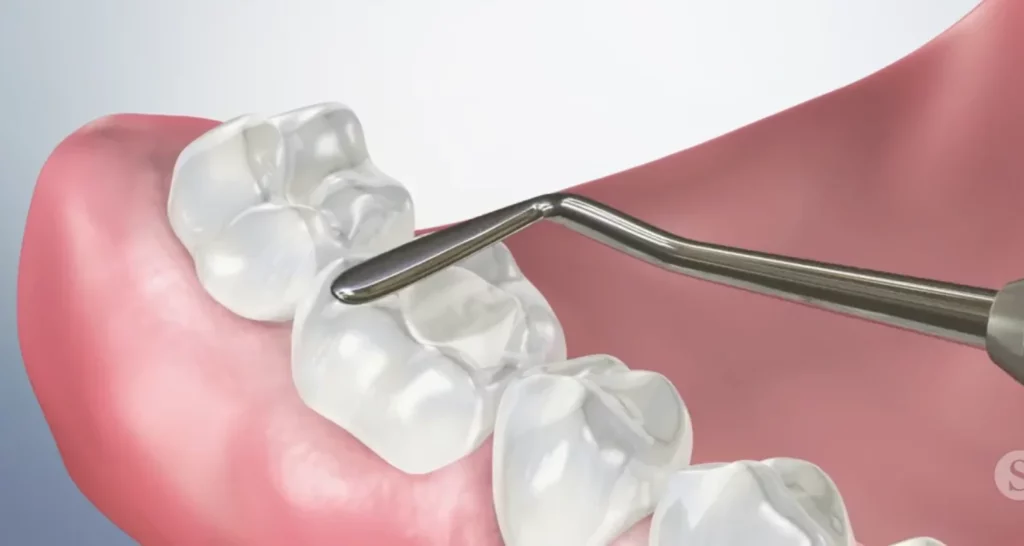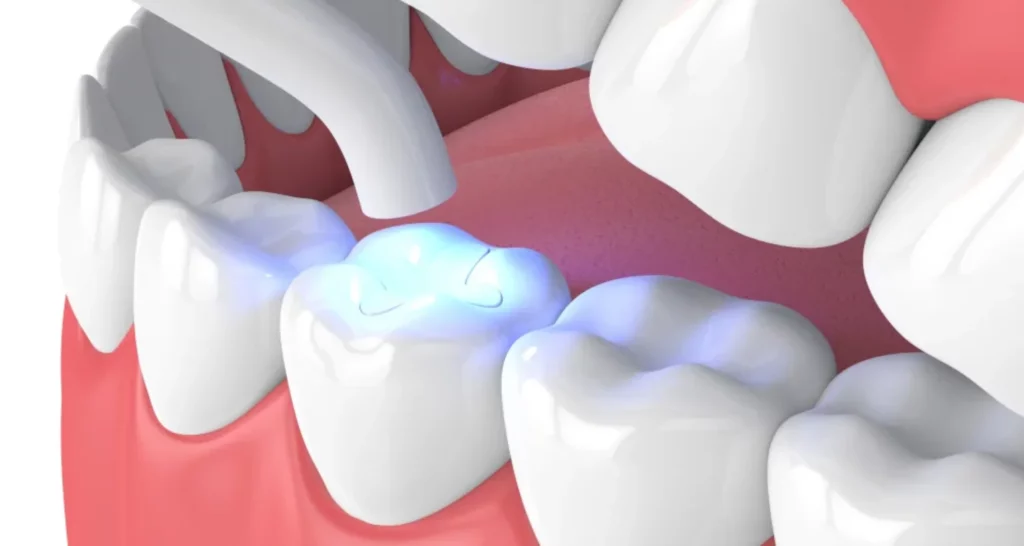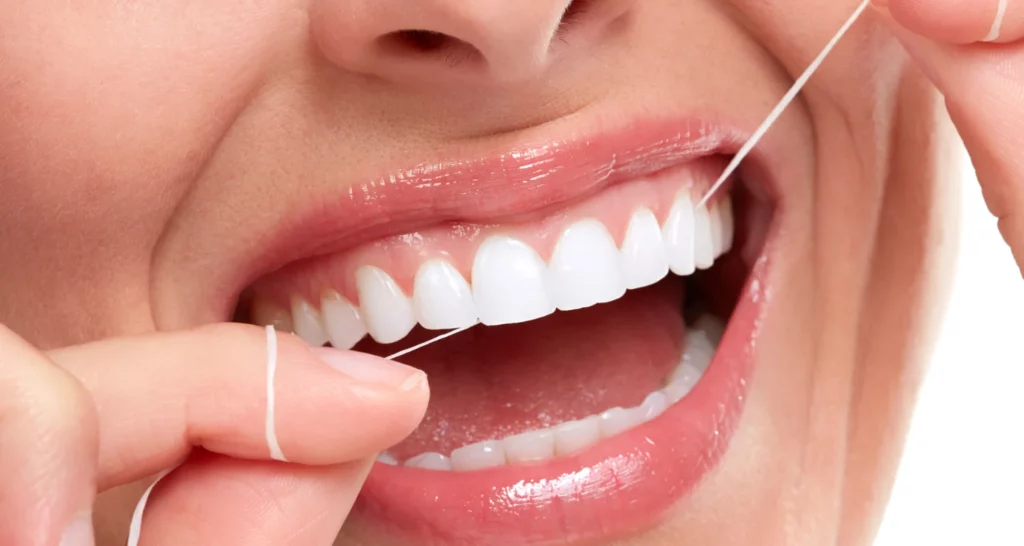Last Updated on: 19th September 2025, 12:47 pm
The discomfort and pain caused by dental caries is a condition for which a quick solution is always sought. A temporary dental filling is the answer that dentistry offers as it affects many people, and at unexpected times.
The temporary dental filling as a procedure prevents the lesion generated by a cavity from advancing to a more complex oral health condition, while offering quick relief.
It is also an alternative for therapeutic management in other dental treatments.
However, it is necessary to take into account that it is a temporary solution and a phase of a full treatment; it is not the permanent solution. The temporary dental filling must be replaced by a permanent filling that offers a higher level of protection.
What is a temporary filling? In which cases does it apply as management therapy? What care does it require? Does it have side effects? These are some of the questions answered in this article.
What is a temporary dental filling?
The provisional filling or temporary filling is a temporary resource to treat a tooth that presents decay or another lesion, with the purpose of preventing the damage from advancing. It is not a long-term solution, and a follow-up visit is required to replace it with a permanent filling.
It is used when additional time is required to prepare the final filling or when the tooth needs temporary protection before receiving full dental treatment.
When are temporary dental fillings used?
Temporary fillings are an alternative for therapeutic management for different dental treatments:
1. Caries. They are used in the first stage of the treatment of dental caries,thus preventing an infection from advancing, while reducing discomfort and pain. Generally, it is considered an emergency therapeutic alternative.
2. Crowns. In cases when it is necessary to recover the shape, strength, and size of a tooth, the temporary filling works as a provisional cap that protects the dental cavity, but it must later be replaced by the permanent crown.
3. Sensitive teeth. For very sensitive teeth, temporary fillings help manage discomfort and allow the tooth to heal before a permanent filling is placed.
4. Dental fractures. If there is damage to the tooth, but the structure allows it to hold the filling, without the need for a crown or inlay.
5. Root canal (endodontics). After this treatment, the temporary filling seals the hole in the treated tooth, preventing food debris and bacteria from accessing the internal part, thereby causing other injuries.
What is a temporary dental filling made of?
A temporary dental filling is made up of temporary materials that are different from those used in permanent dental fillings. Compared to permanent fillings, the temporary filling implies differences in durability, appearance, and aftercare.
Temporary padding is made of soft material that allows for easy removal, such as:
● eugenol zinc oxide
● Cavit
● zinc phosphate cement
● glass ionomers
The most commonly used material is glass ionomer, as it offers greater short-term strength and is softer than amalgam, porcelain, or other materials.
Frequently, the color is different in tone than that of the normal teeth. The temporary filling can be bright white, white with a pinkish tint, or gray. This characteristic of the color makes it easier for the dentist to locate the temporary filling and replace it with the permanent one.
How long does a temporary dental filling last?
The duration of a temporary dental filling will vary, depending upon several factors, such as the type of material used, the location of the filling, and the care taken.
Over time, they gradually decompose, due to the soft material used. They crack and fall off, which is why they need to be replaced with permanent fillings.
The lifespan of a temporary filling will vary from person to person, depending upon the material used. However, the average duration can be counted in weeks.
What is the procedure to fix a temporary filling?
The procedure to place a temporary dental filling is relatively simple and takes place in the dentist’s office in a single visit. It is done in four steps:
1. A local anesthesia is administered to the teeth, gums and area close to the intervention site.
2. With the use of the dental bur, cavities and affected tissue are removed to ensure the area i s free of risks.
3. The dentist mixes the filling material, places it in the cavity and presses on it, extending the mass to all points of the tooth, until the empty space is filled.
4. The last step is to remove the excess filling, smooth and shape the tooth so it does not affect the alignment of the bite.
For temporary crown fillings, additional steps are required to allow the permanent crown to be positioned later.
What after care does a temporary dental filling require?
Due to their temporary condition, these fillings are not durable and some care must be taken while making the change for the permanent filling.
Generally, it is recommended not to chew on that side of the mouth, in the immediate hours following the procedure to facilitate drying of the filling for fixation to the tooth.
It is also advisable not to consume hard or sticky foods such as nuts, peanuts, sweets, ice, candies or gums, since due to their texture they can fracture the temporary filling or detach it.
Careful dental hygiene is essential when brushing and flossing. The floss should be withdrawn gently so it does not bind with the filling and pull it loose.
Another necessary aspect of care is to avoid continuous contact of the tongue with the temporary filling, as frequent rubbing can loosen it.
Does a temporary dental filling have side effects?
Temporary dental fillings are generally safe and do not usually generate significant side effects. However, in some cases, certain side effects may occur that must be taken into account.
The temporary filling needs to be replaced with a permanent one because the material gradually breaks down, leaving the cavity open to infection.
In some cases, an allergic reaction to the temporary filling material occurs, although this circumstance is not frequent. Inflammation in the mouth or a rash in the area of the filling are some of the signs of an adverse reaction.
It is possible to experience tooth sensitivity after placement of the temporary filling because the surrounding tissue is irritated during the procedure. That feeling goes away in no time. If it persists, you should consult your dentist.
If you perceive changes or discomfort in the bite or adjustment of the teeth, the health professional should be informed to make the required adjustments.
Important to remember that it is temporary, not permanent
Temporary dental fillings are an effective alternative for cases that require a quick solution, such as a cavity or temporary management during a long-term treatment to restore a damaged tooth.
It must be taken into account that it is a provisional management alternative that needs to be replaced by the permanent filling, since with the passage of time the temporary filling deteriorates and leaves the tooth exposed to different types of injuries.
Following the instructions of the treating dentist is vital to avoid problems with the temporary filling and to apply the permanent filling within the expected time, thus facilitating the success of the treatment.
Conclusion
Temporary dental fillings offer a quick and effective solution for managing dental pain and discomfort caused by cavities, fractures, or during the preparatory phases of more extensive treatments like crowns and root canals. While they provide immediate relief and protection, it is crucial to remember that temporary fillings are not a permanent solution.
They must be replaced with permanent fillings to ensure long-term dental health and protection. Adhering to post-care instructions and scheduling timely follow-up appointments with the dentist are essential steps to prevent further complications and to facilitate successful dental restoration.
Frequently Asked Questions
What limitations apply to temporary fillings?
Temporary fillings come with specific dietary restrictions. It’s advisable to steer clear of hard foods such as nuts and sticky foods like toffee. Instead, opt for soft foods like soup and mashed potatoes, which are more suitable. Additionally, remember to brush your teeth gently.
When can I safely eat after getting a temporary filling?
It is generally advisable to wait until the anesthesia has fully worn off to prevent accidentally biting your tongue. In certain cases, it may be necessary to wait up to 24 hours before consuming food on the side of the mouth where the filling was placed. This waiting period ensures that the filling remains secure and intact.
Which foods should be avoided after receiving a temporary filling?
As a general guideline, it’s best to steer clear of sticky foods such as gum and chewy caramels, as well as solid and crunchy foods like nuts and hard candy. These types of foods have the potential to dislodge the temporary filling.
Is it safe to brush my teeth after receiving a temporary filling?
Following the placement of a temporary filling, you might have some apprehensions regarding brushing your teeth. However, it is perfectly fine to brush the filled tooth just as you would your other teeth. To ensure caution, employ a toothbrush with soft or extra-soft bristles and brush gently, yet attentively.
Share:
References
1. Buffa Vanesa (May 24, 2023) Obturation or dental filling: types and everything you need to know / https://mejorconsalud.as.com/obturacion-empaste-dental/
2. Dental Board of California (n.d.) Facts About Fillings – Dental Materials Fact Sheet / https://www.dbc.ca.gov/formspubs/pub_dmfs_spanish.pdf
3. Dental Health Society (October 25 de 2021) What Are Temporary Dental Fillings? Why Might You Need One? / https://dentalhealthsociety.com/fillings/what-are-temporary-dental-fillings-why-might-you-need-one/
4. Gutiérrez Lorena (March 27, 2023) Dental filling: filling as a solution for caries / https://www.dentaly.org/es/odontologia-general/empaste-dental/
5. Higuera Valencia (April 24, 2020) All About Temporary Fillings / https://www.healthline.com/health/temporary-filling
6. Sensodyne (s.f.) What to know about temporary tooth fillings / https://www.sensodyne.com/en-gb/oral-health-tips/temporary-tooth-filling/
-
Nayibe Cubillos M. [Author]
Pharmaceutical Chemestry |Pharmaceutical Process Management | Pharmaceutical Care | Pharmaceutical Services Audit | Pharmaceutical Services Process Consulting | Content Project Manager | SEO Knowledge | Content Writer | Leadership | Scrum Master
View all posts
A healthcare writer with a solid background in pharmaceutical chemistry and a thorough understanding of Colombian regulatory processes and comprehensive sector management, she has significant experience coordinating and leading multidisciplina...



